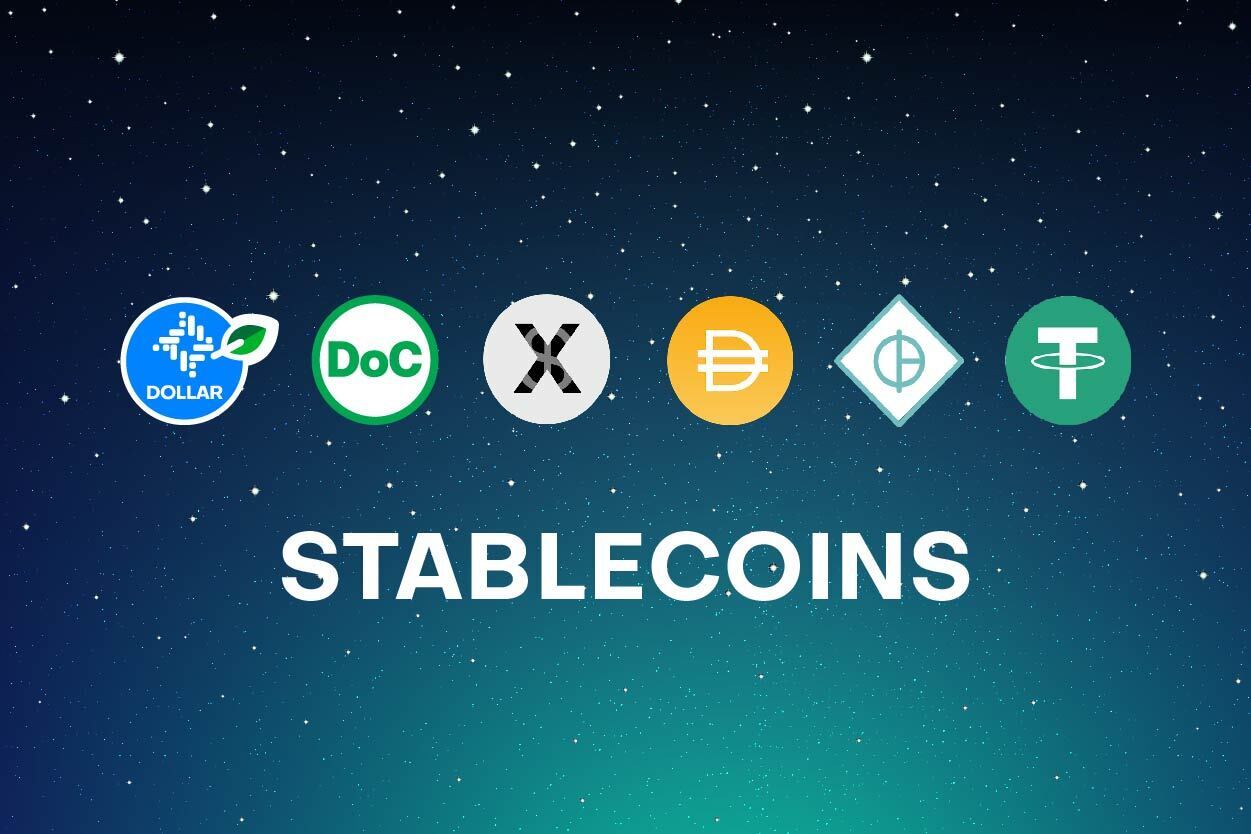Overview - The Complete Guide to Stablecoins

RSK is the most secure smart contract network in the world and enables decentralized applications secured by the Bitcoin network to empower people and improve the quality of life of millions.
In this section, we will cover what stablecoins are, and the types of stablecoins.
What are Stablecoins?
A stablecoin is a token built on a blockchain network that is designed to minimize volatility by pegging to a more stable asset. Most commonly, they are backed by US dollars, but they can also be backed by other fiat currencies, such as euros or yuan. Even assets like gold, or other cryptocurrencies. Benefits of this include being able to take advantage of blockchain technology and peer-to-peer value transfer while not being exposed to the high price volatility of Bitcoin, Ether, or other cryptocurrencies.
Stablecoins are a relatively new kind of digital asset, and they come with different implementations, liquidity, risks, and acceptance levels.
Watch the explainer video below to learn more about stablecoins.
Types of Stablecoins
Among stablecoins, there are several designs for the (eponymous) stability feature. The two most common types are convertible and synthetic stablecoins. The key difference between these two is how they are collateralised.
Convertible stablecoins:
Convertible stablecoins are backed by assets that are held in a reserve, where the asset acts like an IOU that is held by a centralized entity. The most commonly used are fiat-backed stablecoins pegged to the US dollar like USDT or USDC.
Synthetic stablecoins:
Synthetic stablecoins aim to target a return to a reference asset, such as the USD, but they are not directly convertible for fiat currencies.
One way to achieve the target stability is by using crypto-collateralization (for example, DOC or RDOC), or using derivatives (eg XUSD). Another way is through a peg that is actively managed using an algorithmic monetary policy or smart contract (eg Terra or Ampleforth). These are often used in conjunction with oracles that provide on-chain access to price feeds for fiat and blockchain asset pairs.
Stablecoin Gas fee Comparison tool
This is a tool for comparing average gas fees paid for the last 200 transfer transactions of DAI and USDT Stablecoins on Ethereum and RSK blockchains. The tool makes a live request to the Covalent database, gets the information about the latest transactions of selected Stablecoin and displays the prices converted to USD using the latest rBTC - USD and Ether - USD exchange rate.
Stablecoin Gas Fee Comparison Tool
Next
Be sure to check out our next article in this guide, about The difference between stablecoins and other digital assets - The Complete Guide to Stablecoins
If you would like to delve deeper, here are some resources and tools that we recommend.
Resources:
- Visit RSK Developers Portal
- Dollar on Chain: A stablecoin for bitcoiners, by bitcoiners
- Defiant: Solutions on RSK
- RSK Token Bridge
- Webinar: RSK - Ethereum Tokenbridge
- Build on Bitcoin using rDAI
- Ask any Difference
- Difference between a Cryptocurrency and Token
- What are Stablecoins?
- RSKSwap
- RSK Explorer
- Stablecoin Gas Fee Comparison Tool